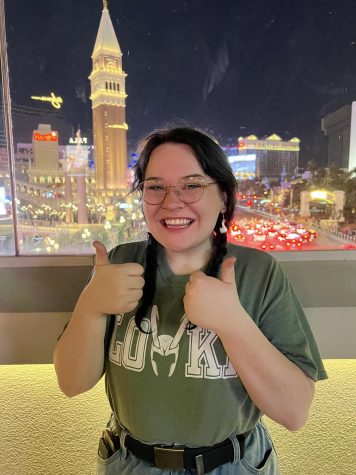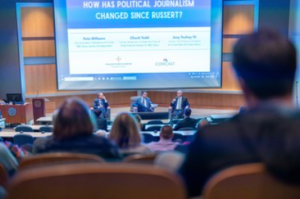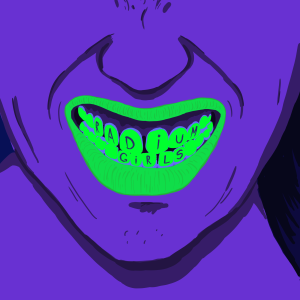Biphobia and Acceptance in the LGBT Community
“One day, I know that I won’t be called selfish for being bisexual and invalidated, and I hope that day comes very soon.”

Biphobia runs rampant both inside and outside of the LGBTQIA+ community.
Jun 17, 2021
After the legalization of same-sex marriage in June of 2015 in the United States, LGBTQIA+ pride month could finally be a celebration of love for all. The movement was first spearheaded by activists in November of 1969 after a year of aggression from police and hate groups. Through years of turmoil, like the Stonewall Riots in 1969 and blatant homophobia from oppressive communities, queer individuals seem finally to be able to show their true colors.
However, there remains much more work to do. According to Case Western Reserve University, one third of LGBTQIA+ students still experience harassment because of their orientation and 43% of students classify their campus as homophobic. Students today still fight hard to change the stigma around sexualities. While these efforts may seem to be working, especially given the growing population of people who openly identify as LGBTQIA+ and the over 150 postsecondary education institutions that now have LGBTQIA+ centers many types ofdiscrimination continue to grow.
One specific kind of discimination, biphobia ––the fear of bisexual individuals or bisexuality as a whole –– has spread rampantly throughout the past years. Bisexuality is often used as an umbrella term for other orientations like pansexual and omnisexual; basically any sexuality where you are attracted to more than one gender. However, there are nuanced differences between each specific sexuality. Over 50% of homosexual people identify as bisexual, according to the Human Rights Campaign.
While it may seem sensible to merge biphobia with homophobia, the two can not be lumped together so easily. President Joe Biden even mentioned biphobia separately from homophobia and transphobia in his May 17 statement. Yes, bisexual people are a part of the LGBTQIA+ community, but bisexuality has taken criticism from both heterosexual and homosexual groups which has left a myriad of individuals feeling marginalized. According to bi.org, bisexual individuals often struggle for visibility within the community.
Although media and societal norms have grouped bisexuality in with the entire LGBTQIA+ term, bisexual individuals do not often feel welcome by the community. This is especially so for bisexual people who have a preference for and/or are in a relationship with the opposite gender.
Why does biphobia exist inside the queer community? According to an article by Refinery29, many bisexual people feel that they are demeaned by the queer community for being “straight-passing” or appearing heterosexual to the public eye. Often, according to Stylebook and bi.org, gay or lesbian people state that bisexuality discredits the meaning of pride and the hardships of queer history. Bisexual individuals often feel unnecessarily questioned about their sexuality and whether they will ever “pick a side.” Or they may be called “greedy” because they are attracted to multiple genders. This can be very harmful to a bisexual person’s identity, potentially leading to internalized monosexism and a repression of one’s bisexuality.
“The invalidation many wlw (women-love-women) receive from their own community is startling,” Emily Slusarz ’24 told The Carroll News. “To discredit someone for ‘seeming straight’ is ridiculous in my opinion. They [bisexuals] still have struggles with accepting their sexuality, coming out, etc. and should have a community that supports them.”
Robyn Ochs, a bisexual author, described the issue. “Gay and lesbian identified individuals frequently view us as either confused or interlopers possessing a degree of privilege not available to them, and many heterosexuals see us as amoral, hedonistic spreaders of disease and disrupters of families.”
“I do not even try to celebrate pride anymore,” an anonymous student from John Carroll stated. “Since I have a boyfriend and appear heterosexual to the public eye, it feels pointless trying to convince people I am a part of the LGBT community. I will just be left out by both the gay circle and continue to be scrutinized by the heterosexual crowd.”
The effects of biphobia have not gone unnoticed. According to Boston University Today, bisexual individuals often have poorer sexual health, face more sexual violence due to fetishization and do not come out to their doctors as much as heterosexual or homosexual individuals. Medical News Today also states that bisexuals are more susceptible to certain types of cancers as well as mental health problems like substance abuse, depression, self harm and others. The Stonewall Foundation in Britain found that a larger percentage of bisexual people were sexually assaulted than homosexual people (42% of those bisexual individuals believed that their orientation was motivation for the attack). Stonewall also states that on a social level, bisexuals are less likely to be out to their friends and family and are more likely to face healthcare discrimination than gays or lesbians.
Yet, there is hope to eliminate this stigma. Campaigns like Still Bisexual and the Bisexual Organizing Project may help decrease levels of biphobia. As more individuals continue to embrace their bisexuality and fight against societal norms, acceptance of bisexuality may increase.
Joellyn Wilken Weingourt from The Equality Federation sums up bisexual acceptance.
“My sexual orientation is not a choice,” she states. “There is power in living your life and being your full, authentic self. It sounds illogical but ,in order to be the best ally I can be, I need to stop being just an ally. Today, I am going to stand inside the community I fully belong in. I am a cisgender woman, somewhere in my 40s, I have a husband and a child. And I am proud to be bisexual. I am proud of my past and my present. I am excited about my out and proud future.”
“I will come out soon to my friends and family when it feels safe,” the anonymous student continued. “One day, I know that I won’t be called selfish for being bisexual and invalidated, and I hope that day comes very soon.”
This article is part of The Carroll News pride month series.












